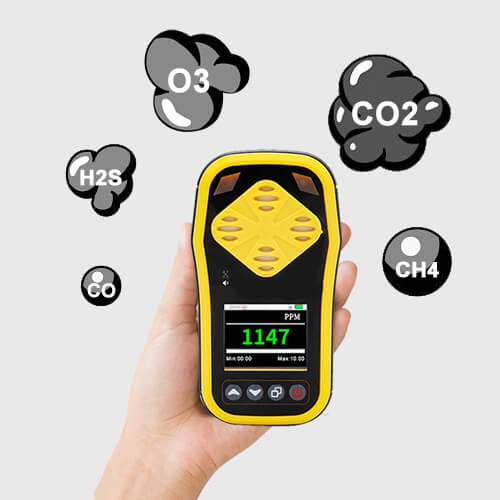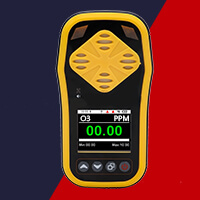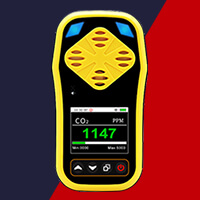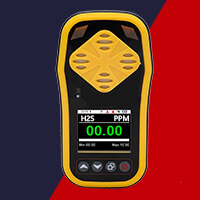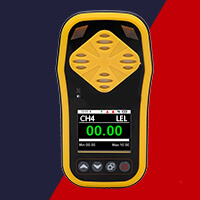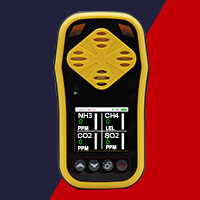Monitoring hazardous gases in the surrounding environment is fundamental to ensuring workplace safety. Many gases, such as carbon monoxide, hydrogen sulfide, etc., are difficult to detect if they are beyond the safe range without professional gas detection equipment. Because you can’t see, smell or taste these gases, professionals often use portable gas detectors to ensure teams have clean air on the job. If the concentration of harmful gases in the environment exceeds the standard, the gas detector will alarm to alert your team. You can then immediately evacuate the area or use a respirator to protect yourself from exposure.
What is a Portable Gas Detector?
Portable gas detector is a kind of electronic instrument for gas detection. It is mainly used to detect and monitor various gas concentrations and changes in the environment, and to display and store the detection data on the display screen. Among the gas detectors, there are mainly portable and fixed types. Fixed gas detectors It is fixed in one place to detect various gas changes in a fixed place, while the portable gas detector can be carried around, usually used for personal safety protection.
Different Kinds of Portable Gas Detectors
In portable gas detectors, we can roughly divide such gas detectors into single gas detectors and multi-gas detectors. The main difference is that a single gas detector can only detect the concentration of one gas, while a multi-gas detector can detect two or more gas concentrations. Next, I will introduce you to the types of portable gas detectors in detail:
Single gas detectors:
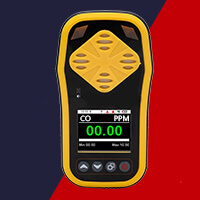
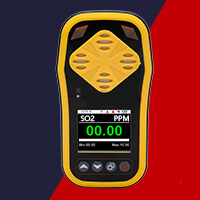
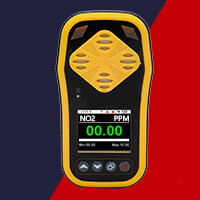
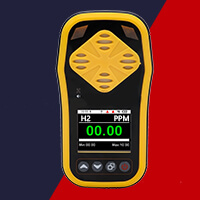
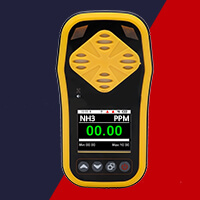
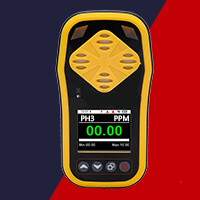
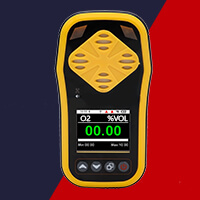
The portable ozone detector can detect the ozone concentration in limited space and outdoor environment, and can also be used for space sampling detection after ozone disinfection. The gas to be tested contacts the sensor in an extended manner, and reacts to output a stable electrical signal. The commonly used measurement range is 0~10ppm. The ozone gas concentration value can be accurately displayed on the LCD screen by numbers, with a sound and light alarm function, to avoid the harm caused by the high ozone concentration to the on-site personnel.
Portable ozone detectors are widely used in the pharmaceutical industry, hospitals, food and beverage industry, cold storage, farming and other industries.
A CO2 detector is an instrument for monitoring carbon dioxide gas. The public awareness of the dangers of indoor carbon dioxide has increased, and portable CO2 gas detectors have become more and more popular. Through the absorption principle of the infrared light source, the carbon dioxide gas in the scene environment is detected, and people are reminded to open the windows for ventilation in time. The measuring range of the Renke portable CO2 gas detector is 0~5000ppm.
Portable carbon dioxide detectors have been widely used in aquaculture, agricultural greenhouses, pharmaceuticals, schools, sewage treatment and other fields, and have become an indispensable protective equipment in industrial safety production.
3. H2S portable gas detector
Hydrogen sulfide is a toxic gas, which can easily poison people and endanger life safety. Therefore, portable H2S gas analyzers are used in many routine chemical plant work. The portable H2S gas detector can detect gas concentration in pipelines or confined spaces, atmospheric environments, and can also detect various gas leaks and the purity of high-concentration single gas. The measuring range of the Renke portable hydrogen sulfide gas detector is 0~10ppm.
Hydrogen sulfide detectors have been widely used in petroleum, chemical, gas transmission and distribution, storage, municipal gas, fire protection, environmental protection, metallurgy, biochemical medicine, energy and power industries.
4. CH4 protable gas detector
Methane is the main harmful gas in coal mines, which seriously threatens the safety of underground operators. The CH4 portable gas detector is small in size and easy to carry with you. It can accurately check the methane concentration in the mine in real-time and prevent major accidents. The Renke methane gas detector has a measurement range of 0~100 LEL.
Portable CH4 detectors are mainly used in confined spaces such as underground pipelines or mines.
5. CO protable gas detector
Carbon monoxide is a highly toxic gas, and it is easy to produce. Coal combustion and natural gas leakage will produce carbon monoxide, which can easily lead to poisoning and even death. Therefore, the use of CO gas detectors becomes particularly important. CO portable gas detector is a kind of detection equipment that can continuously monitor carbon monoxide gas. The built-in sensor adopts advanced electrochemical original sensor, which is sensitive in response and high in precision. Its measurement range is 0-1000ppm and 0-2000ppm, which can meet a variety of use environments.
In the production of synthetic ammonia, acetone, phosgene and methanol in the chemical industry, a carbon monoxide gas detector must be equipped. When the car is not turned off in the parking lot, a large amount of toxic and harmful carbon monoxide gas will be produced. Once the sensor detects that the current carbon monoxide content exceeds the standard, it will automatically turn on the ventilation equipment to ensure ventilation and personnel safety in the parking lot.
6. NO2 protable gas detector
The NO2 portable gas detector is specially used to detect the NO2 content in the environment. It is a personal safety monitoring and alarm device. Its main function is to monitor the concentration of NO2 in the air around the user at all times. Once the concentration of NO2 reaches a certain value, it will automatically activate the sound, flash, and vibration triple alarm of the gas detector. The measuring range of the Renke NO2 gas detector is 0~20ppm and 0~2000ppm optional.
The NO2 gas detector can continuously monitor the concentration of toxic, harmful and flammable, and explosive gases in the environment. It is suitable for emergency rescue of explosion-proof and toxic gas leakage, underground pipelines, chemical industry, tunnels and other places to effectively prevent the occurrence of poisoning accidents.
7. SO2 protable gas detector
SO2 portable gas detectors can clearly show the presence of sulfur dioxide contained in the air. Its operation is simple, and it can detect the hydrogen sulfide gas concentration in the air in real-time without any chemical reagents. Same as the portable NO2 gas detector, its measurement range is also 0~20ppm and 0~2000ppm.
Widely used in sulfuric acid manufacturing plants, pharmaceutical plants, liquid SO2 production, food processing (bleaching, anti-corrosion), environmental protection industries and other occupational safety protection.
8. H2 protable gas detector
The H2 portable gas detector is an instrument used to detect the hydrogen concentration in the environment. Using imported electrochemical sensors, it has excellent sensitivity and repeatability. Take it with you wherever you go. Wide measurement range 0~1000ppm.
The metal smelting process requires a large amount of hydrogen for the reaction, so the metallurgical industry needs to use hydrogen gas detectors in the process of hydrogen storage and use.
9. NH3 protable gas detector
NH3 portable gas detector is a kind of poisonous and harmful gas detector. It is used to detect the concentration of ammonia gas in the air. Just start it up, and it can directly display the ammonia gas concentration of the current environment on the display screen. Its sensor belongs to electrochemical In nature, it can respond to the gas to be measured in the air and has high sensitivity. It greatly satisfies the requirements for safety monitoring in industrial sites. The measuring range of the Renke ammonia gas detector is 0~50ppm and 0~100ppm optional.
NH3 gas detectors are widely used in petrochemical, environmental monitoring, agriculture, school laboratories, and other industries.
10. PH3 protable gas detector
PH3 is a colorless, flammable gas that is highly toxic. Phosphine has strict standards in the storage and transportation process. Once leakage occurs, it will lead to human poisoning, injury and even fire and explosion accidents. The PH3 portable gas detector can effectively and accurately measure its concentration and leakage. It is the current way for the industry to warn of phosphine gas accidents. The measurement concentration range is usually 0~20ppm.
PH3 gas detectors are widely used for phosphine gas generated in the process of grain storage and pest control in granaries.
11. O2 protable gas detector
Portable o2 gas detectors are mainly used to detect the concentration of oxygen within a fixed range. The purity of oxygen in the industrial field is relatively high, and there is a risk of personnel poisoning and explosion in the event of leakage. Therefore, the use of oxygen gas detectors can issue sound and light warnings in time when oxygen leaks to remind personnel. Evacuate and take measures to ensure the safety of production operations.
Multi gas detectors:
12.Multi gas detector
The multi gas detector is an instrument and equipment for detecting a variety of gases. When two or more gases need to be monitored in the working environment, a multi-gas detector is required. Usually, the gases detected by multi-gas detectors are mainly CO, H2O, O2, SO2, NH3, CL2, etc. Currently, the most common multi-gas detectors are 2 in 1 gas detectors, 3 in 1 gas detectors, 4 in 1 gas detectors, 5 in 1 gas detectors, 8 in 1 gas detectors, etc. Select the corresponding gas sensor for the actually detected gas and integrate it into an integrated gas detector device.
Conclusion
Whether it is a single gas detector or a multi-gas detector, it is mainly based on the number and types of gas sensors matched with the gas detector. At present, the gas sensor has a two-in-one gas sensor. Due to some special two gases, It is possible to use the same gas sensor for detection, such as oxygen and hydrogen sulfide, carbon monoxide and oxygen, etc. With this type of gas sensor, we can greatly save our detection costs.

